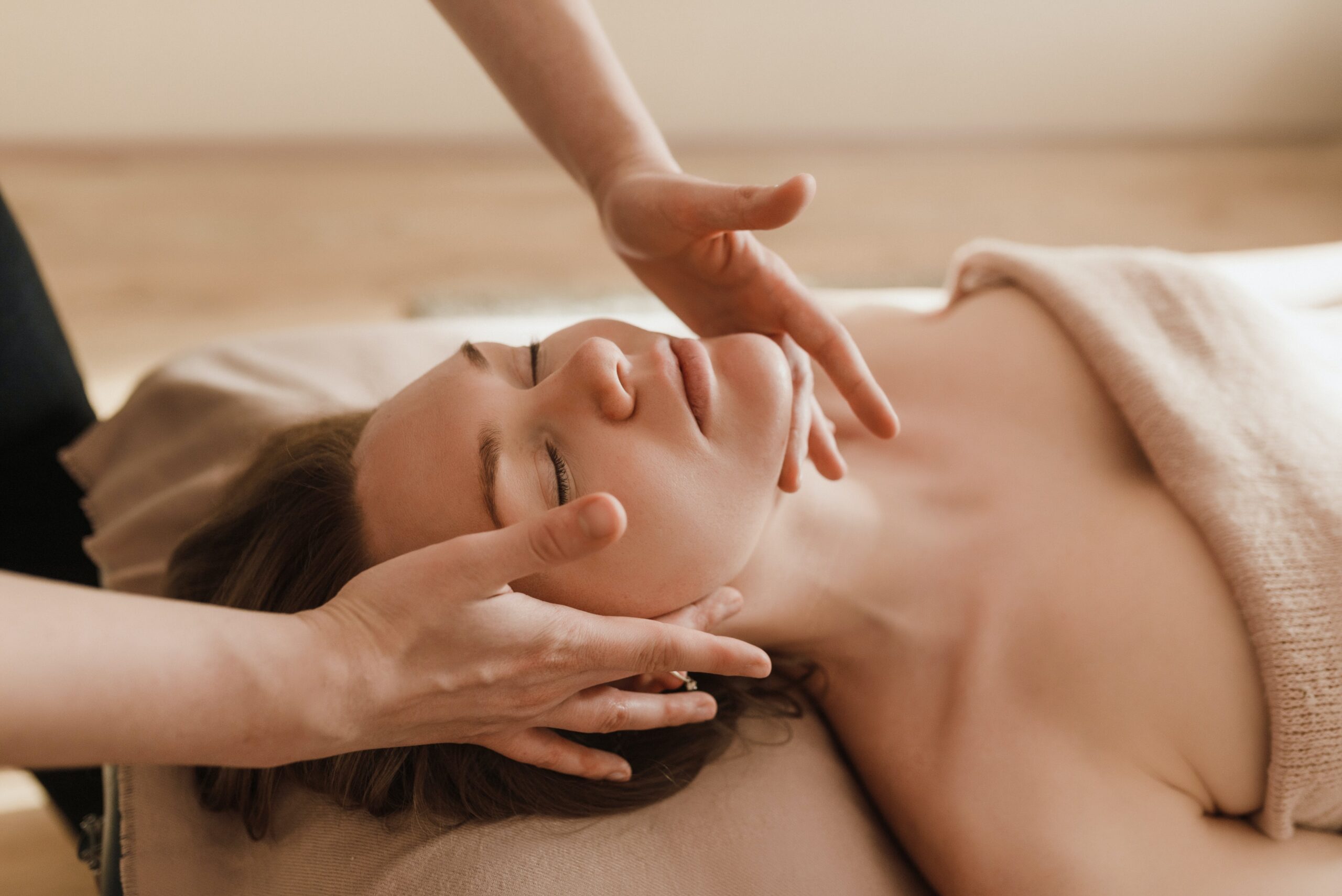Exercise Tips
The Ultimate Guide to Golden Retriever Exercise Requirements

In this article, we will discuss everything you need to know about Golden Retriever exercise requirements. From the amount of exercise they need to the best types of activities for them, we will cover it all. If you want to ensure your Golden Retriever stays healthy and happy, keep reading to learn how to meet their exercise needs.
How much exercise do Golden Retrievers need?
Golden Retrievers are active dogs that require plenty of exercise to keep them healthy and happy. On average, they need at least 1-2 hours of exercise each day. This can be in the form of walks, runs, or playtime in the yard. Without enough exercise, Golden Retrievers can become bored and anxious, leading to behavioral issues.
It’s important to tailor your Golden Retriever’s exercise routine to their age, health, and energy level. Puppies will have different exercise needs than adult dogs, and older dogs may need gentler activities. Always consult with your veterinarian to determine the best exercise plan for your Golden Retriever.
What are the best types of exercise for Golden Retrievers?
Golden Retrievers are versatile dogs that enjoy a variety of activities. Some of the best types of exercise for them include:
- – Daily walks: Regular walks are a great way to meet your Golden Retriever’s exercise needs.
- – Running: If you’re a runner, your Golden Retriever will likely enjoy going for runs with you.
- – Swimming: Many Golden Retrievers love to swim, and it’s an excellent low-impact activity for them.
- – Playtime: Engaging in games like fetch, tug-of-war, and hide-and-seek can provide both physical and mental stimulation for your dog.
It’s important to mix up your Golden Retriever’s exercise routine to keep them engaged and prevent boredom. Try to incorporate different activities into their daily schedule to keep things interesting for them.
How should I exercise my Golden Retriever in different weather conditions?
Golden Retrievers are adaptable and can exercise in various weather conditions, but it’s essential to take precautions to keep them safe and comfortable. In hot weather, avoid exercising your dog during the peak heat of the day and opt for early morning or evening walks instead. Make sure they have access to shade and plenty of water to stay hydrated.
In cold weather, protect your Golden Retriever from extreme temperatures by outfitting them with a suitable coat or sweater and avoiding prolonged exposure to the elements. Additionally, be cautious of icy or snowy conditions that can be slippery and cause injury.
How can I tell if my Golden Retriever is getting enough exercise?
Golden Retrievers are generally good at indicating whether they are getting enough exercise. Signs that your dog may need more physical activity include restlessness, excessive barking, destructive behavior, and weight gain. On the flip side, if your Golden Retriever is content, relaxed, and well-behaved, they are likely receiving adequate exercise.
It’s essential to monitor your dog’s behavior and adjust their exercise routine as needed. If you notice any concerning changes in their behavior, consult with your veterinarian to address their exercise needs.
How can I prevent my Golden Retriever from getting bored during exercise?
To prevent your Golden Retriever from getting bored during exercise, it’s important to keep things fun and engaging. Incorporate different activities into their routine, such as playing with toys, practicing obedience training, or exploring new environments. Additionally, consider joining dog-friendly classes or groups to provide socialization opportunities for your dog.
Engage your Golden Retriever both mentally and physically during exercise to keep their minds stimulated. Rotate activities regularly, offer rewards for good behavior, and provide plenty of positive reinforcement throughout their exercise sessions.
Conclusion
In conclusion, meeting your Golden Retriever’s exercise requirements is essential for their overall well-being. By providing them with regular physical activity, mental stimulation, and variety in their exercise routine, you can ensure that they lead a happy and healthy life. Be mindful of their individual needs and consult with your veterinarian to create a tailored exercise plan that suits your Golden Retriever.
FAQs
How often should I walk my Golden Retriever?
Golden Retrievers should ideally be walked at least once a day, but many will benefit from two walks if possible. If your schedule allows, consider incorporating short walks in the morning and evening to ensure your dog receives enough exercise.
Can Golden Retrievers exercise in hot weather?
Golden Retrievers can exercise in hot weather, but precautions should be taken to prevent heat-related issues. Avoid exercising them during the hottest part of the day, provide plenty of water, and watch for signs of overheating, such as excessive panting or lethargy.
Are there any indoor exercise options for Golden Retrievers?
Yes, there are several indoor exercise options for Golden Retrievers, such as playing fetch in a large hallway or participating in interactive games like hide-and-seek. Puzzle toys and training activities can also provide mental stimulation for your dog when outdoor exercise is not possible.
How can I exercise my Golden Retriever during the winter months?
During the winter months, you can exercise your Golden Retriever through activities like indoor play, short walks in the snow, and agility training in covered areas. Just be mindful of cold temperatures and icy conditions that can be uncomfortable or hazardous for your dog.
Are there any alternatives to traditional exercise for Golden Retrievers?
Alternatives to traditional exercise for Golden Retrievers include dog sports like agility, obedience training, and scent work. These activities provide mental and physical stimulation while fostering bonding between you and your dog. Additionally, consider enrolling your Golden Retriever in doggy daycare or arranging playdates with other dogs for socialization and exercise.
Exercise Tips
The Exercise Coach: Is It Worth the Cost? A Breakdown of the Monthly Pricing

Is The Exercise Coach Worth the Cost? A Breakdown of the Monthly Pricing
In this article, we will discuss whether The Exercise Coach is worth the cost. We will break down the monthly pricing of The Exercise Coach and examine the value it provides. We will also explore the effectiveness of The Exercise Coach’s workout programs and the overall experience it offers. By the end of this article, you will have a better understanding of whether The Exercise Coach is a worthwhile investment for your fitness journey.
What is The Exercise Coach?
The Exercise Coach is a fitness studio that offers personalized workout programs designed to optimize results in minimal time. Using proprietary technology and scientific principles, The Exercise Coach aims to provide efficient and effective exercise routines for individuals looking to improve their fitness levels.
Now, let’s delve into the monthly pricing of The Exercise Coach to determine if it is worth the cost.
How Much Does The Exercise Coach Cost Per Month?
The monthly cost of The Exercise Coach varies depending on the location and package you choose. On average, monthly pricing can range from $200 to $400. This fee typically includes a set number of training sessions per week, access to the studio’s equipment, and personalized coaching from certified trainers. The Exercise Coach offers different packages to accommodate varying fitness goals and budget constraints, so it’s essential to inquire about the specific pricing options available at your local studio.
While the cost may seem high compared to traditional gym memberships, The Exercise Coach emphasizes the value of its tailored approach and the efficacy of its programs. The personalized attention and specialized training methods are factors that contribute to the pricing structure.
What Does The Monthly Fee Cover?
When you sign up for The Exercise Coach, the monthly fee typically covers a specific number of training sessions per week, which are scheduled in advance to ensure consistency and accountability. Additionally, it includes access to the studio’s state-of-the-art equipment and technology, such as computerized resistance machines and heart rate monitoring tools. Moreover, the fee encompasses ongoing support and guidance from certified fitness coaches who work with you to optimize your workouts and monitor your progress.
The comprehensive nature of the monthly fee reflects The Exercise Coach’s commitment to delivering a holistic fitness experience that goes beyond traditional gym memberships.
Is The Exercise Coach Worth the Cost?
Ultimately, whether The Exercise Coach is worth the cost depends on your fitness goals, preferences, and budget. If you prioritize personalized attention, efficiency, and scientifically-backed training methods, the monthly pricing of The Exercise Coach may align with the value it offers. However, if you prefer a more flexible, self-guided approach to fitness, the cost of The Exercise Coach may not be justified for your needs.
It’s crucial to consider the potential impact on your fitness journey and overall well-being when evaluating the worth of The Exercise Coach’s pricing. Assessing the long-term benefits and the potential for achieving desired results can help you determine if the cost is justified for you.
Conclusion
In conclusion, The Exercise Coach provides a unique fitness experience that is tailored to individuals seeking efficient and effective workouts. The monthly pricing is reflective of the personalized attention, advanced technology, and expertise offered by The Exercise Coach. Whether it’s worth the cost depends on your specific fitness needs and preferences.
FAQs
1. Can I try The Exercise Coach before committing to a monthly package?
Many studios offer trial sessions or introductory packages for individuals interested in experiencing The Exercise Coach before committing to a monthly package. These options allow you to gauge the suitability of The Exercise Coach for your fitness goals and preferences.
2. Are there additional fees or hidden costs associated with The Exercise Coach?
The monthly pricing of The Exercise Coach typically includes all necessary costs for the scheduled training sessions, access to equipment, and coaching support. It’s advisable to inquire about any potential additional fees or costs before signing up for a package to ensure full transparency.
3. What makes The Exercise Coach different from traditional gyms?
The Exercise Coach distinguishes itself from traditional gyms through its emphasis on personalized training, efficiency, and scientifically-driven workout programs. This tailored approach sets The Exercise Coach apart in terms of the overall fitness experience it provides.
4. Can I cancel my monthly package with The Exercise Coach?
Most studios have specific cancellation policies that outline the process for discontinuing a monthly package with The Exercise Coach. It’s recommended to review these terms before committing to a package to understand the flexibility of cancellations.
5. Is The Exercise Coach suitable for individuals at different fitness levels?
Yes, The Exercise Coach is designed to cater to individuals of various fitness levels. Whether you are a beginner or an experienced fitness enthusiast, the personalized approach of The Exercise Coach can be adapted to accommodate your specific needs and goals.
FITNESS
3 Powerful Ballistic Stretching Exercises to Boost Your Flexibility

Achieving greater flexibility can have a tremendous impact on your overall physical performance and well-being. In this article, we will discuss three powerful ballistic stretching exercises that can help you boost your flexibility. These exercises are designed to increase the range of motion in your joints and muscles. They are advanced stretching techniques that can help you achieve greater flexibility in a shorter period of time. By incorporating these exercises into your regular routine, you can improve your athletic performance, reduce the risk of injury, and enhance your overall flexibility.
What is Ballistic Stretching?
Ballistic stretching involves using the momentum of a moving body or a limb to force it beyond its normal range of motion. Unlike static stretching, which involves holding a stretch for a prolonged period of time, ballistic stretching uses rapid, bouncing movements to push the muscles and joints to their limits. This type of stretching is often used by athletes and dancers to improve their flexibility and range of motion. While ballistic stretching can be highly effective, it also carries a higher risk of injury compared to other forms of stretching. It’s important to approach ballistic stretching with caution and gradually build up to more intense movements.
Here are three powerful ballistic stretching exercises that can help you boost your flexibility:
Exercise 1: Leg Swings
Leg swings are a great ballistic stretching exercise for improving the flexibility of your hamstrings, hip flexors, and adductors. To perform leg swings, stand next to a wall or sturdy object for support. Lift one leg off the ground and swing it forward and backward in a controlled, sweeping motion. Allow your leg to swing as high as comfortably possible, without forcing it. Gradually increase the height and intensity of your swings as your muscles warm up. Perform 10-15 swings on each leg, and switch to the other leg. Remember to keep your movements smooth and controlled to avoid overstretching or straining your muscles.
Leg swings can help improve the flexibility and range of motion in your hip and leg muscles. They also help to loosen up the joints and improve circulation in the lower body. Incorporating leg swings into your warm-up routine can help prepare your muscles for more intense physical activity and reduce the risk of injury.
Exercise 2: Arm Circles
Arm circles are a dynamic stretching exercise that can help improve the flexibility and range of motion in your shoulders and upper body. To perform arm circles, stand with your feet shoulder-width apart and extend your arms out to the sides. Begin by making small circles with your arms, gradually increasing the size and speed of the circles as your muscles warm up. Perform 10-15 circles in each direction, and then switch to the other arm.
Arm circles can help to loosen up the muscles and joints in your shoulders, arms, and upper back. They can also improve circulation and reduce stiffness in the upper body. Adding arm circles to your warm-up routine can help prepare your upper body for physical activity and improve your overall flexibility and range of motion.
Exercise 3: Split Jumps
Split jumps are a dynamic ballistic stretching exercise that can help improve the flexibility and strength of your lower body. To perform split jumps, start in a lunge position with one foot forward and the other foot back. Jump explosively off the ground, switching the position of your feet mid-air. Land with the opposite foot forward and immediately jump again, alternating the position of your feet with each jump. Perform 10-15 split jumps on each leg, and gradually increase the intensity and height of your jumps as your muscles warm up.
Split jumps can help improve the flexibility, strength, and explosive power of your lower body. They can also improve your balance, coordination, and agility. Adding split jumps to your workout routine can help enhance your athletic performance and improve the flexibility and range of motion in your lower body.
Conclusion
Flexibility is an important component of physical fitness that can have a significant impact on your overall health and performance. Ballistic stretching exercises can help you achieve greater flexibility in a shorter period of time, but it’s important to approach them with caution to avoid injury. By incorporating leg swings, arm circles, and split jumps into your regular routine, you can improve your athletic performance, reduce the risk of injury, and enhance your overall flexibility. Remember to warm up your muscles and approach ballistic stretching gradually to maximize the benefits and minimize the risk of injury.
FAQs
1. Are ballistic stretching exercises safe for everyone?
Ballistic stretching exercises can be effective for improving flexibility, but they carry a higher risk of injury compared to other forms of stretching. If you have a pre-existing injury or condition that affects your muscles, joints, or flexibility, it’s important to consult with a healthcare professional before attempting ballistic stretching exercises. It’s also important to approach ballistic stretching with caution and gradually build up to more intense movements to reduce the risk of injury.
2. How often should I incorporate ballistic stretching exercises into my routine?
It’s important to listen to your body and adjust your stretching routine based on your individual needs and goals. If you are new to ballistic stretching, start by incorporating these exercises into your routine 2-3 times per week and gradually increase the frequency as your flexibility improves. It’s also important to balance ballistic stretching with other forms of stretching and strength training to achieve a well-rounded fitness routine.
3. Can ballistic stretching exercises help improve my athletic performance?
Yes, ballistic stretching exercises can help improve your athletic performance by increasing your flexibility and range of motion. By incorporating these exercises into your regular routine, you can improve your agility, balance, and coordination, which are essential for many sports and physical activities. However, it’s important to approach ballistic stretching with caution and gradually build up to more intense movements to avoid injury.
4. How can I avoid injury when performing ballistic stretching exercises?
To avoid injury when performing ballistic stretching exercises, it’s important to warm up your muscles and gradually build up to more intense movements. Start with slower, smaller movements and gradually increase the speed and intensity as your muscles warm up. It’s also important to listen to your body and stop the exercise if you experience any pain or discomfort. It’s essential to approach ballistic stretching with caution and avoid overstretching or forcing your muscles beyond their limits.
5. Are there any alternatives to ballistic stretching exercises for improving flexibility?
Yes, there are many alternatives to ballistic stretching exercises for improving flexibility, including static stretching, dynamic stretching, and yoga. It’s important to explore different stretching techniques and find the ones that work best for your body and fitness goals. It’s also important to listen to your body and choose stretching exercises that feel comfortable and effective for you.
Body Care
The Hidden Danger of Arm Circles: Why It’s Not a Safe Stretching Exercise

Description: In this article, we will discuss the hidden danger of arm circles as a stretching exercise. Many people believe that arm circles are a safe and effective way to warm up and stretch their shoulders and arms, but there are potential risks and dangers associated with this exercise. We will explore why arm circles may not be as safe as they seem and discuss alternative stretching exercises to protect your shoulders and arms.
Are Arm Circles Really Safe?
Many people incorporate arm circles into their stretching routine, believing it to be a safe and effective way to warm up and stretch their shoulders and arms. However, arm circles may not be as safe as they seem. The repetitive, circular motion of the shoulders and arms during this exercise can put excessive strain on the shoulder joint and surrounding muscles. This can potentially lead to overuse injuries, such as tendonitis or impingement syndrome.
Additionally, if arm circles are performed with poor form or too quickly, it can exacerbate existing shoulder and arm issues or even cause new injuries. This is especially true for individuals with pre-existing shoulder or arm injuries or conditions. Therefore, it is important to recognize the potential dangers of arm circles as a stretching exercise.
What Are the Risks of Arm Circles?
The repetitive nature of arm circles can lead to overuse injuries, particularly when performed with poor form or excessive speed. The shoulder joint is a complex structure with multiple muscles, tendons, and ligaments that work together to allow a wide range of motion. When these structures are constantly subjected to repetitive, forceful movements such as arm circles, it can cause wear and tear that can lead to pain, inflammation, and reduced mobility.
Individuals with existing shoulder or arm injuries or conditions are at an even higher risk of exacerbating their issues when performing arm circles. This exercise can worsen symptoms and delay the healing process, leading to chronic pain and discomfort. It is important to consider these risks and alternatives to arm circles to protect your shoulder and arm health.
What Are Safer Alternatives to Arm Circles?
While arm circles may be popular, there are safer and more effective alternatives to stretch and warm up the shoulders and arms. One alternative is shoulder rolls, where you gently roll your shoulders in a circular motion, focusing on controlled and smooth movements. This can help improve flexibility and mobility in the shoulder joint without the excessive strain of arm circles.
Another alternative is the doorway stretch, where you place one hand on a door frame or wall, and gently lean forward to stretch the chest and shoulders. This can help alleviate tension and tightness in the shoulders and arms without the repetitive motion of arm circles. It is important to explore these alternative stretching exercises to protect your shoulder and arm health.
Conclusion
Arm circles may seem like a harmless stretching exercise, but they can pose hidden dangers to the shoulder and arm health, especially if performed with poor form or excessive speed. The repetitive, forceful motion of arm circles can lead to overuse injuries and exacerbate existing shoulder and arm issues. It is important to recognize the potential risks of arm circles and consider safer alternatives, such as shoulder rolls and doorway stretches, to protect your shoulder and arm health.
FAQs
Q: Can arm circles cause shoulder injuries?
A: Yes, arm circles can potentially cause shoulder injuries, especially if performed with poor form or excessive speed. The repetitive, forceful motion of arm circles can lead to overuse injuries, such as tendonitis or impingement syndrome.
Q: Are there safer alternatives to arm circles for stretching the shoulders and arms?
A: Yes, safer alternatives to arm circles include shoulder rolls and doorway stretches. These exercises can help improve flexibility and mobility in the shoulder joint without the excessive strain of arm circles.
Q: Is it important to consider pre-existing shoulder or arm injuries when performing arm circles?
A: Yes, individuals with existing shoulder or arm injuries or conditions are at a higher risk of exacerbating their issues when performing arm circles. It is important to consider these risks and explore safer alternatives to protect shoulder and arm health.
Q: Can arm circles lead to chronic pain and discomfort in the shoulders and arms?
A: Yes, arm circles can potentially lead to chronic pain and discomfort in the shoulders and arms, especially if performed with poor form or excessive speed. It is important to recognize these risks and consider safer alternatives to protect shoulder and arm health.
Q: Should arm circles be avoided altogether, or are there ways to perform them safely?
A: While arm circles can pose potential risks, they can be performed safely with proper form and controlled movements. It is important to be mindful of your body and consider alternatives to arm circles to protect your shoulder and arm health.

 FEATURED1 year ago
FEATURED1 year agoHow to Get A Bigger Butt | 10 Super Foods For A SEXY Booty!

 FEATURED5 months ago
FEATURED5 months ago7 Ways to Avoid Sickness on Cold Days

 FITNESS4 months ago
FITNESS4 months agoHow to Get a Stronger Upper Body with Push-ups A Comprehensive Guide

 NEWS AND TRENDS1 year ago
NEWS AND TRENDS1 year ago9 Best Benefits Of Exercising Regularly

 Uncategorized5 months ago
Uncategorized5 months agoLow-Carb Recipes for Gym Lovers

 FEATURED1 year ago
FEATURED1 year ago5 Things to Protect your Skin

 FITNESS1 year ago
FITNESS1 year ago6 Health Benefits Of Jogging

 Workouts1 year ago
Workouts1 year ago10 Easy Ways to Improve Your Fitness






























